Are you feeling that sinus congestion that so frequently comes when everyone huddles indoors, thereby creating the “Cold Season”? The same spices you might be using to bake the holiday goodies can be used to alleviate this congestion. You might need this now more than ever, as the Pharma-created cold symptom relief is neither very effective nor good for you.
The U.S. FDA, for example, locked up the pseudoephedrine (which did a little bit for congestion) because people used it as a starting material for methamphetamine. Just lovely. And it tends to elevate the blood pressure. So, about a decade and a half ago, we were offered phenylephrine in its place. It’s less effective for sinus congestion, and even worse for the side effect of high blood pressure. Phenylephrine is the injectable drug used in the ICU to support blood pressure in highly monitored, critical cases. It’s short acting and titratable, and that’s another reason it’s a bad choice for over the counter use. You don’t want to be constantly repeating oral doses that raise the blood pressure, more so than they can act on your sinuses to alleviate your congestion. There’s also ‘a rebound effect if you use it topically. The frequently failing FDA is therefore pulling this drug back from use in the oral, over- the-counter meds.
What’s a person to do for the obnoxious stuffy nose and congestion that prevents good sleep?
At weedom, we watch and read the output of herbalists from all over. Several years ago there was a cool vid from Kami McBride showing a mix of pungently aromatic spices to use nasal congestion. Much of the content of this mixture was anti-inflammatory. It made sense, and upon trying it, we found that it was good. (If you’ve ever taken ibuprofen while you have a cold, and noticing that it lessens the congestion a bit, then you know from direct experience that anti-inflammatory spices could also help.) In the spirit of promoting people from whom we get good ideas: Kami McBride is also pretty well known for making herbal infused oils, getting this done with more weed power while avoiding the mold issue, and she regularly offers an online class. Here’s her site.
Let’s get an cursory view of the ingredients and rationale for adding each one to this mix.
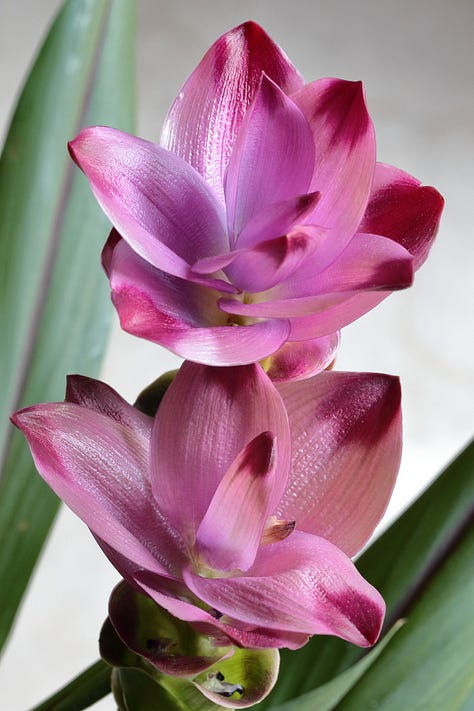
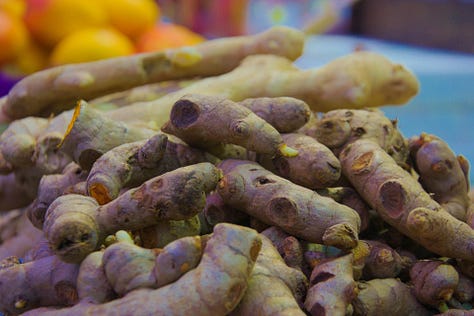
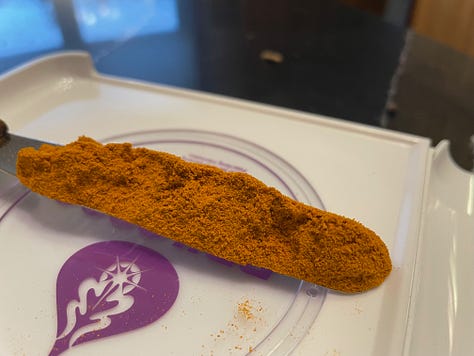
Turmeric, Curcuma longa, is a member of Zingiberaceae, the same family as ginger. With origins in S.E. Asia, the rhizome, (commonly called root) of this plant has been in use in cuisine and medicine for about 4 millennia. Currently most of the world’s turmeric is produced in India, which uses up about 80 percent of it. Chefs of India don’t sprinkle this spice into food. They shovel it. Curcumin is the prominent and most studied compound found in turmeric, comprising up to 8 percent of the dried root. Many anti-inflammatory pharmaceuticals inhibit prostaglandin synthesis. Turmeric does its work by modulating inflammation, though numerous mechanisms. It also increases glutathione which assists with detoxification, decreases damage by free-radicals, and interferes with various inflammatory proteins. Turmeric is a warming and drying herbal influence. It has vastly more activity, than that mentioned above, including some protective mechanisms against effects of influenza A virus.
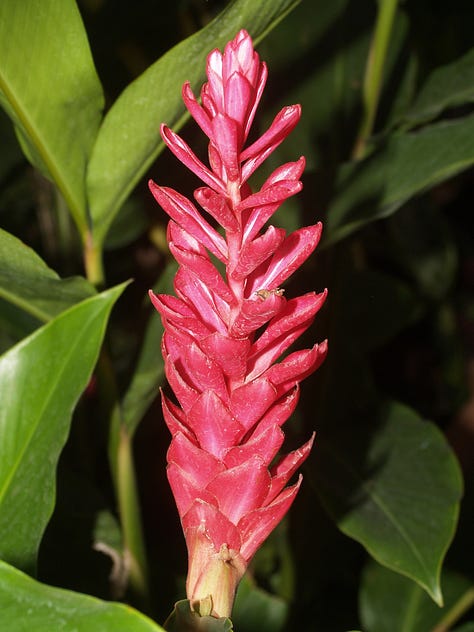
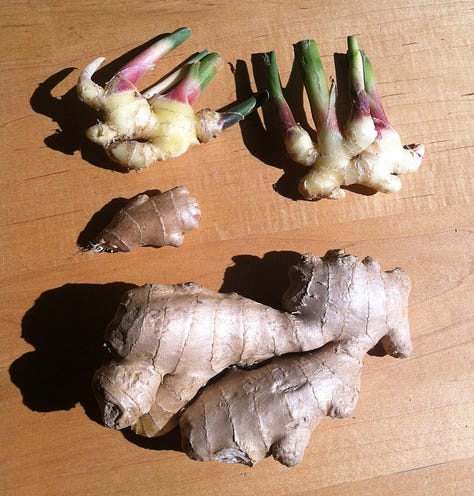
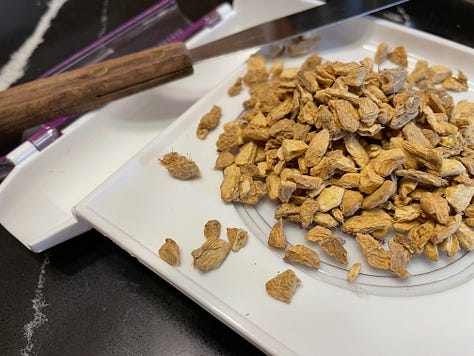
Ginger, Zingiber officinale, has top billing in the Ayurveda world of medicine, and in Western herbalism as another warming, drying anti-inflammatory spice. The rhizome has been used fresh, or dried in food and medicine throughout Asia and the Western world for longer than written history, and has been cultivated for so long that no-one is sure where it originated. It has salutary effects on circulation, respiration and digestion, and it tastes great. When it comes to using Ginger and fitting it to your constitution, remember that the dried ginger is hotter, and fresh ginger is merely considered warm. Ginger dilates blood vessels, stimulates circulation, and fluid movement in the body. It’s used as an additive to lots of herbal formulations to enhance the activity of the other ingredients. Ginger has anti-microbial properties which may help to inhibit added infections that sometimes occupy cold-virus ravaged territory. Ginger may inhibit strep throat, some intestinal infections and some fungal pathogens. For antimicrobial potency, the fresh ginger is preferred, but dried ginger retains the anti-inflammatory and fluid moving properties needed for cold and flu symptom relief.
Black Pepper, Piper nigrum of Piperaceae family, accounts for about 20% of the spice trade. The use likely began in India over 4 millenia ago, and moved to the West in trade over 3000 years ago. Peppercorns are the dried berries of this plant, and the various colors of pepper that you see are from differing methods of processing the same kind of berries. This digestive stimulant enhances the absorption of various nutrients in food, and is said to increase bioavailability of beneficial turmeric constituents up to 2000 percent (20 fold) perhaps by enhancing circulation or by modulating membrane permeability. Black pepper is used for obtaining the medicinal benefits of turmeric, which is not normally not well absorbed. Black pepper also enhances availability of echinacea, goldenseal, Co-enzyme Q-10, beta-carotene, B vitamins, etc. The piperine in black pepper is responsible for inhibiting p-glycoprotein and CYP3A4 enzymes in intestinal cells and in the liver, which may account for much of these drug and herb interactions. Those on digoxin, phenytoin , tacrolimus etc. might wish to avoid large changes in the amounts of black pepper in the diet. Black pepper also acts as a stimulating expectorant to move stuck chunks of mucus produced during respiratory infections. It also serves as an antimicrobial, circulatory stimulant, antispasmodic and carminative. Use freshly ground black pepper. The powder loses potency pretty quickly when stored. Therapeutic doses are between 1 and 15 grams
Cloves are the dried, unopened flower buds of the tropical Syzigium aromaticum or Eugenia caryophyllata tree, (Myrtaceae family), which is native to the warm, humid Indonesian islands of Maluku. This slow growing, shade loving tree can live to 100-150 years if treated well. Cloves were a vital part of spice trade, and appear to have reached Syria around 1700 BC., China around 200 BC, Rome around 200 AD, and the rest of Europe by 800 AD. The antiseptic properties were noted fairly early, and this spice is among those used to ward off the plague. Mosquitos don’t like clove trees. (Too bad this tree doesn’t tolerate our cool temperatures.) Oil extracted from the dried clove buds contains copious eugenol, a potent topical anesthetic, which is still used topically for toothache and other mouth pain. Other compounds include eugenyl acetate, β-caryophyllene, thymol and α-humulene The constituents of Clove buds and leaves also exhibit anti-inflammatory effects. Harvest is limited to buds of most clove trees. The leaves contain useful essential oils, but harvesting them is more traumatic to the trees and impedes further growth and bud production.
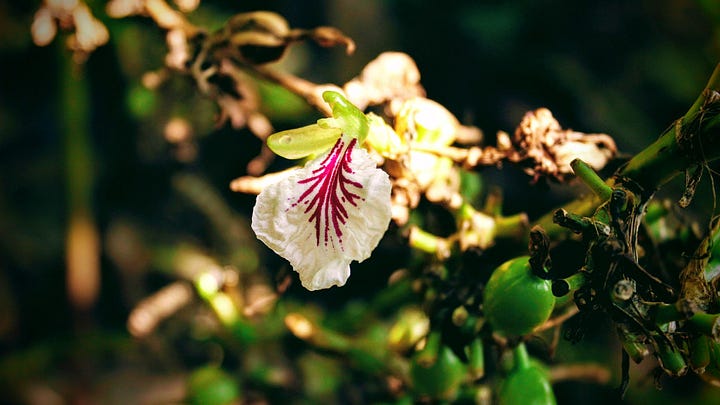
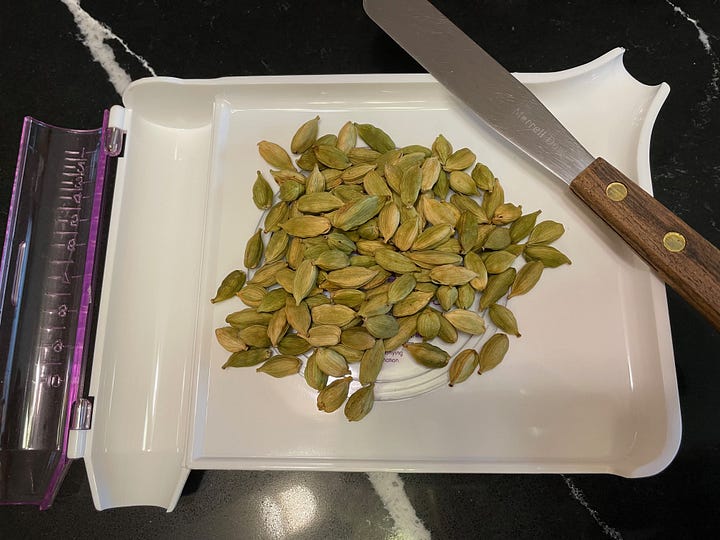
Green Cardamom pods, from Elettaria cardamomum, AKA true cardamom, Siam cardamom, or white cardamom. It is native from largely southern India to Malaysia, and is a member of the ginger family, Zingiberaceae. Green cardamom is regarded as a sweeter, more eucalyptus flavored type, compared to black cardamom, Amomum subulatum, a smokier flavored species found in Nepal and China. Another kind of black cardamom, Lanxangia (or Amomum) tsaoko is used in southern China and Vietnam. Cardamom is regarded as a carminative spice, which addresses flatulence, colic, stomach distress, and gallbladder issues. It is also applied to respiratory disorders, colds bronchitis, sore throat, fever and bad breath. Among the 26 compounds found in essential oil from the seeds within the green pods are α-terpinyl acetate (38.4%), 1,8-cineole (28.71%), linalool acetate (8.42%), sabinene (5.21%), and linalool (3.97%). Antimicrobial activity of the essential oil is noted against such bacteria as E. coli, Bacillus subtilis, Staph. aureus, Salmonella typhi, Strep. pyogenes, and Bacillus cereus, and the fungus Candida albicans. There’s a reason that people will pay for this 3rd most expensive spice (after vanilla and saffron).
The above 5 spices are combined in ratio (by volume) of
6 parts turmeric
6 parts ginger
1 part black pepper
1 part clove
1 part cardamom
We suggest freshly grinding each component shortly before use in this mixture, in order to enjoy maximum flavor and potency.
A small batch can be made by adding a tablespoonful of turmeric, a tablespoonful of ginger, and 1/2 teaspoonful EACH of cardamom, black pepper and cloves. Mix these components together and add them to 4 fluid ounces of honey in a small glass jar. This mixture can be stored at room temp, and used in teaspoonful increments as needed.
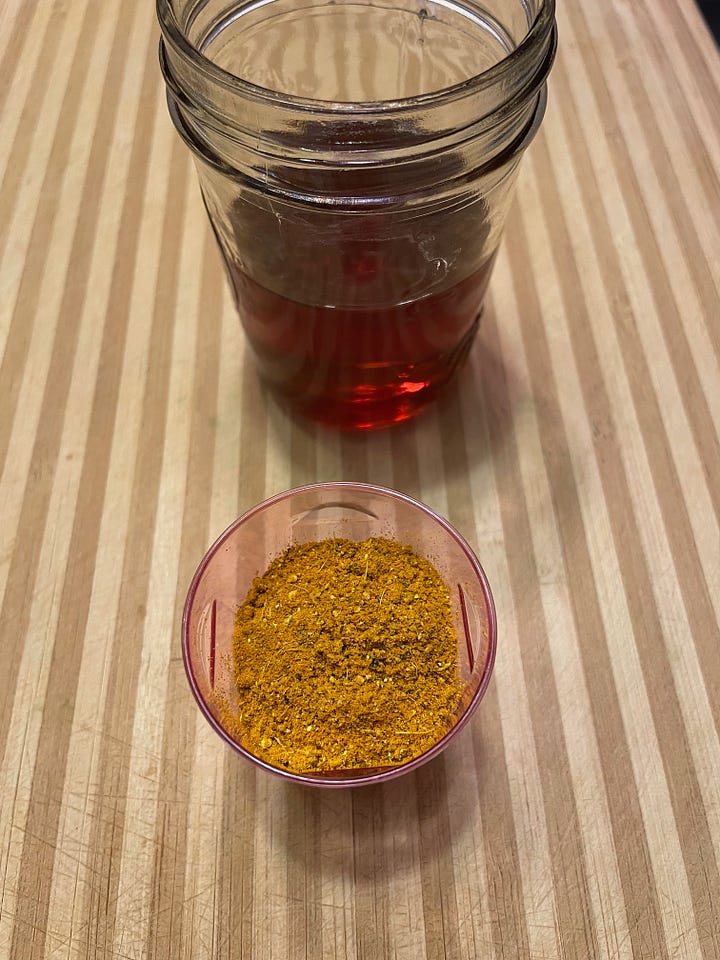
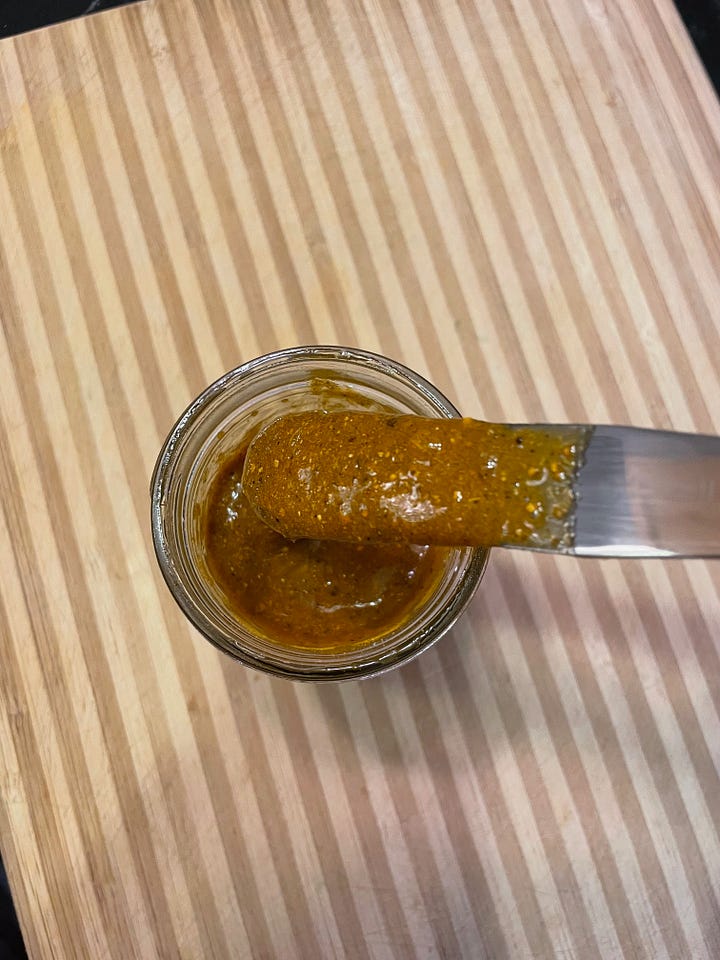
Despite the fact that these spices suspended in honey could be quite usable for at least a year, this product could not be marketed in its final form for visual-aesthetic reasons. In all its glory, and evoking the old Doctrine of Signatures, taken to extremes, we present: Snot Tea !
The stalwart can simply swallow a teaspoon size dose of the gritty sweet-pungent mix, but we prefer to mix it in hot water to enjoy the spicy aroma and heat while consuming it. For a more grit free experience, wait a minute or 2 and the solids will drop to the bottom, leaving you a smooth, warm tea with good flavor. Take full advantage, and breathe in the aroma while drinking this beverage, for a little topical distribution of goodstuff upon your sinus membranes. The above spoonful was not to be wasted, and despite having no cold at the time, your author drank it down. Yum! Think about trying this kitchen remedy for yourself.
Tell us what you think about taking over your cold care.


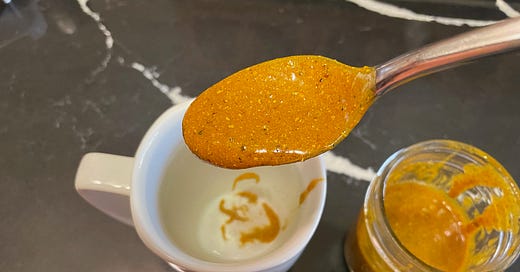


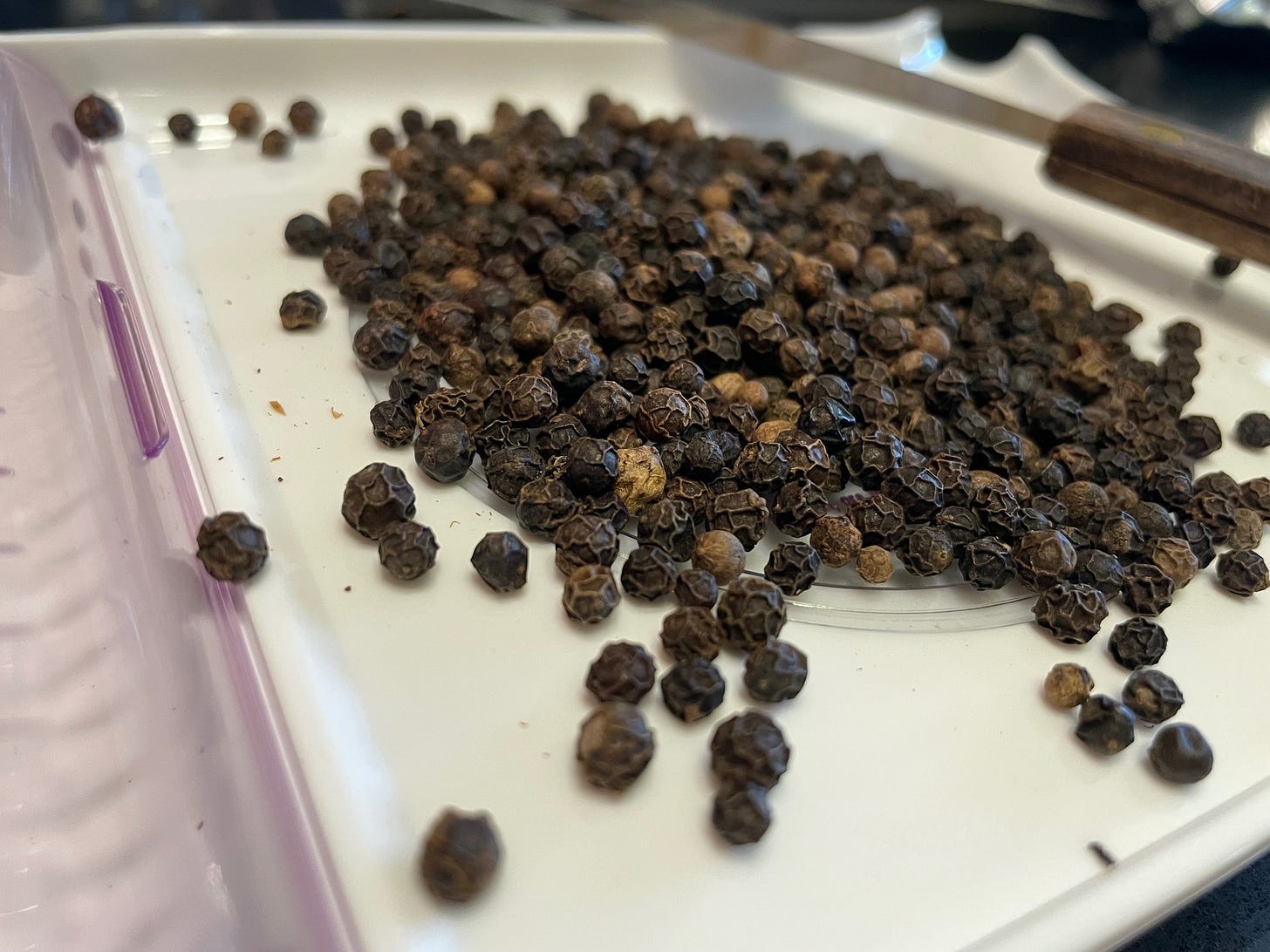
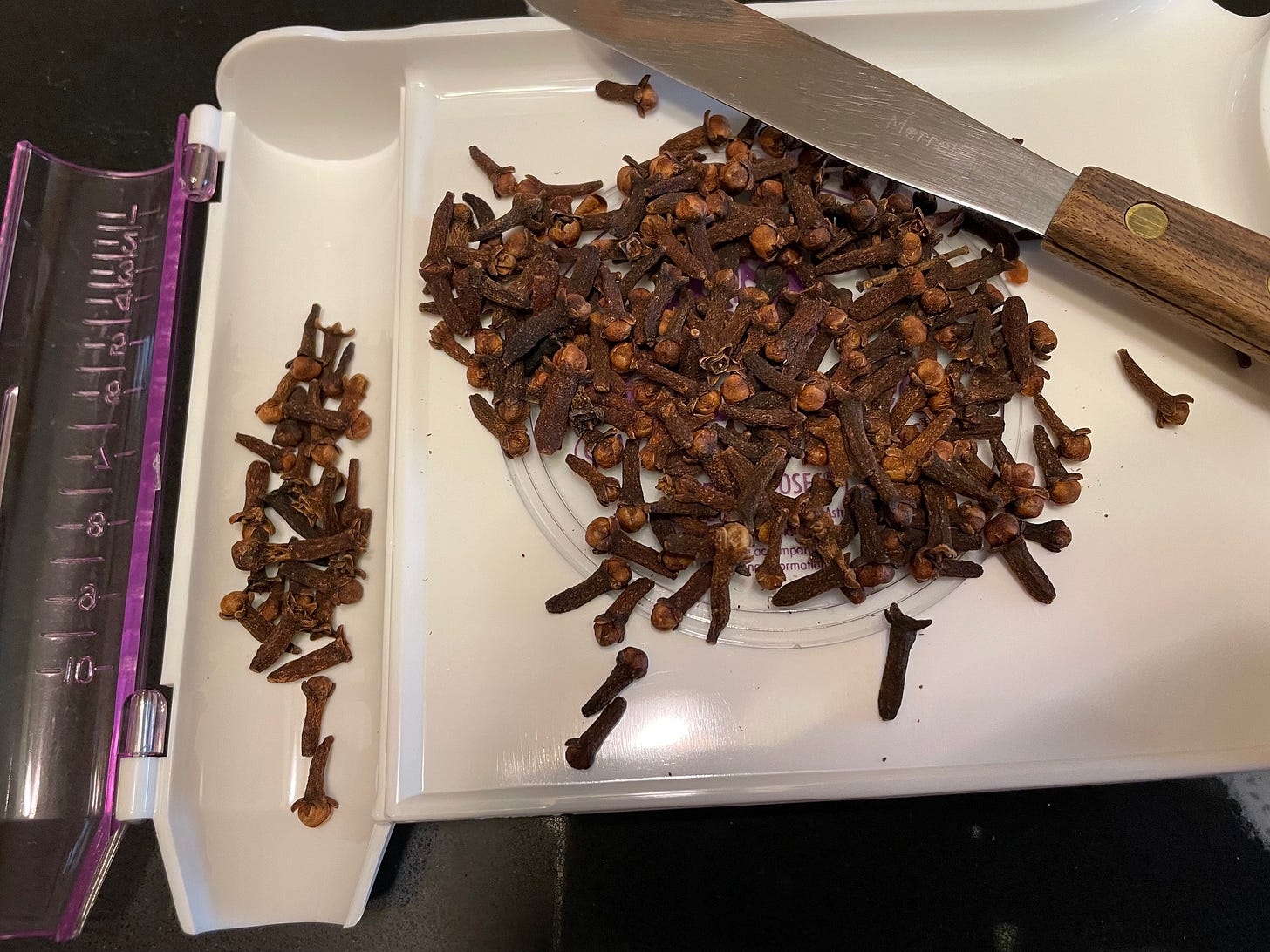



A bit of chili powder adds to the warming effect and the capsaicin also has an immediate reaction in the sinuses.
I love McBride’s book. In my kitchen right now are several items from her recipes: sauté ghee, baking ghee, turmeric honey, winter colds paste, and chai honey. Thanks for sharing this mix and the background details.